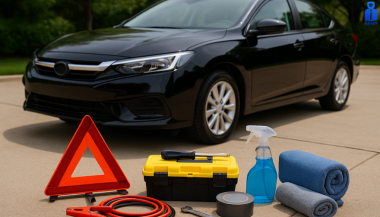The Rising Need for Advanced Car Security
In an era where vehicles are becoming smarter and more connected, the risks of car theft and unauthorized access are also increasing. Modern technology has enhanced both the convenience and vulnerability of cars, making robust security measures more critical than ever. This guide explores the importance of car security, the latest innovations in the field, and practical tips to ensure your vehicle stays protected.
Why Car Security Matters: Understanding the Threat
Car theft remains a significant concern worldwide. According to recent statistics, car-related crimes have shifted from traditional theft methods to more technologically advanced tactics. Thieves now often target vehicles equipped with keyless entry systems, using tools like relay devices to gain access.
In the UK alone, over 100,000 vehicles are stolen annually, with keyless thefts—or "relay attacks"—on the rise. This growing trend highlights the importance of adopting modern security solutions to stay ahead of potential threats.
Key Features of Modern Car Security Systems
Modern car security systems are designed to protect against both physical and digital threats. Some of the most common and effective features include:
Immobilizers
- Prevent the engine from starting without the correct key or transponder signal.
- Often included as standard in modern vehicles, reducing the likelihood of theft.
Alarms
- Act as a deterrent by emitting loud sounds when unauthorized access is detected.
- Many systems also notify the owner via a smartphone app.
GPS Tracking Systems
- Allow real-time location tracking of your vehicle in case of theft.
- Advanced models can remotely disable the vehicle’s engine.
Dashcams
- Record suspicious activity around your car, providing evidence in case of an incident.
- Dual-camera systems monitor both inside and outside the vehicle.
Emerging Trends in Car Security Technology
As technology evolves, so do car security measures. Here are some of the latest innovations transforming vehicle safety:
- Biometric Authentication: Cars equipped with fingerprint or facial recognition systems ensure only authorized individuals can operate the vehicle.
- Digital Keys: Linked to smartphones, these keys allow remote access and control, but also require robust cybersecurity measures to prevent hacking.
- Geofencing Alerts: Some advanced systems notify owners if their car leaves a predefined area, adding an extra layer of protection.
These advancements show how car security is moving beyond traditional locks and alarms, integrating digital solutions for a smarter, safer experience.
Practical Tips to Keep Your Car Safe
While advanced technology can significantly improve car security, there are simple, everyday practices that can also help prevent theft and unauthorized access:
- Park Wisely: Always choose well-lit, secure areas or designated parking spaces. Thieves are less likely to target cars in visible locations.
- Keep Valuables Hidden: Items left in plain sight can attract unwanted attention. Store belongings out of view or in the trunk.
- Use Physical Locks: Steering wheel locks and pedal locks act as visible deterrents, even for modern vehicles.
- Update Software Regularly: For cars with smart systems, keeping the software up-to-date ensures optimal security against potential vulnerabilities.
The Global Perspective: How Car Security Varies Worldwide
Car security trends and practices vary globally, influenced by factors such as local crime rates, technological adoption, and legislation. In countries like the UK and the US, keyless entry systems and advanced alarms are standard features. However, in emerging markets, physical locks and alarms still play a critical role due to affordability and accessibility.
Additionally, some nations have introduced legislation mandating anti-theft systems in new vehicles, further driving innovation in the industry. Understanding these global trends can help car owners make informed decisions when investing in security measures.
Stay Ahead of the Risks
Car security is no longer just about locking your doors—it’s about staying one step ahead of potential threats. With advanced technologies and practical measures, you can significantly reduce the risk of theft and ensure your vehicle remains safe.
Investing in modern security systems, keeping your car’s software updated, and adopting smart habits are all part of building a comprehensive protection plan. In today’s interconnected world, proactive car security is essential for every driver. Stay informed, stay vigilant, and ensure your car stays exactly where it belongs—securely in your possession.

 (1)_1736339630.jpg)

_1736340211.jpg)

_1752757183.jpg)